You’ve got good people in IT. They work hard, care about the business, and want to do things right. But lately, things just feel off.
Projects are delayed. Tickets are piling up. Communication is breaking down. And worst of all, your people are starting to burn out, not just in IT, but across the entire organization.
If that sounds familiar, you’re not alone. These are all signs that your IT structure may not be keeping up with the demands of your business. And if you’re expecting a small internal team to do it all, from day-to-day support to security, compliance, and strategic planning, the pressure will eventually break something.
According to a 2024 report from Splunk, 64% of IT leaders say their teams are too busy reacting to issues to work on strategic priorities. Burnout is becoming the norm, not the exception.
This blog will help you spot the signs early and show you what a healthier, more scalable IT model looks like.
1. Support Tickets Are Piling Up
When your team is drowning, one of the first signs is right in front of you: growing ticket queues.
✔️ Response times are slower
✔️ Issues drag on
✔️ Repeat problems come back like clockwork
It’s not that your team isn’t trying. They’re firefighting. With limited tools and no breathing room, they’re stuck in a reactive loop with no time for long-term fixes.
According to CIO Dive, more than half of IT teams spend the majority of their time on break/fix issues instead of strategic work.
2. Strategic Projects Are Stalled
When was the last time an IT initiative actually made it from kickoff to completion on time?
If projects like cloud migrations, security upgrades, or compliance readiness are sitting untouched quarter after quarter, it’s a red flag.
Your business can’t grow if tech stays stuck.
A McKinsey study found that over 70% of digital transformation projects stall or fail due to internal bandwidth and execution challenges. A team stretched too thin cannot be expected to lead innovation.
3. The Same Problems Keep Coming Back
When IT becomes a revolving door of the same tickets — printers dropping, users locked out, apps misfiring — it’s a sign that root causes aren’t being addressed.
This isn’t just annoying. It’s expensive. Time, morale, and trust all take a hit.
These recurring issues usually stem from lack of documentation, poor system alignment, and zero time for post-issue analysis.
4. IT Feels Like a Cost Center, Not a Strategic Partner
Overworked teams rarely have the time to deliver reporting, forecasting, or recommendations. And without those things, leadership loses visibility.
When leadership sees IT only as overhead, it’s often because no one has the capacity to show its real value. That perception turns into stagnation.
To change that view, the business needs IT to be structured in a way that includes strategic support, not just ticket takers.
5. Everyone Feels It, Not Just the IT Team
The worst part? Burnout spreads.
When IT is stuck in reactive mode, tools break down. Communication fails. Projects stall. Compliance is at risk. And before long, your entire organization feels the ripple effects.
Talent leaves. Morale drops. Progress halts.
Gallup reports that 44% of employees feel burned out sometimes or often, and lack of clarity and inefficient systems are two of the top contributors.
So What’s the Fix? A Scalable IT Structure.
Most internal teams aren’t failing. They’re overextended. IT has become too complex for one person (or even a small team) to wear every hat.
Here’s what a healthy IT support model looks like:
Help Desk
Handles the noise. Day-to-day user issues like password resets, email sync, and basic troubleshooting.
TAM (Technical Alignment Manager)
Keeps your systems healthy and aligned with industry best practices. They patch, document, and standardize your environment so everything runs smoothly behind the scenes.
vCIO (Virtual Chief Information Officer)
The strategist. This role focuses on aligning IT to business goals, planning roadmaps, supporting compliance, and giving executive-level visibility through real reporting and forecasting.
When these three layers work together, your internal team finally gets what it needs:
✔️ Faster ticket resolution
✔️ Real progress on stalled projects
✔️ Peace of mind
✔️ Time and energy to lead
If any of these signs sound familiar, it might be time to rethink your structure. Keep reading to see how to get back on track.
You Don’t Have to Guess. Start with a Maturity Review
At First Call, we help organizations assess where their current IT setup stands. A quick maturity review can reveal:
- Are issues being permanently resolved?
- Are strategic projects being tracked and completed?
- Is leadership getting the data they need?
- Are your tools integrated and your environment secure?
If the answer is no, your team isn’t failing. Your model just isn’t keeping up.
The Results Speak for Themselves
Clients who move to this layered model tell us the stress disappears.
Tickets drop. Projects move. Compliance gets done. And internal IT finally gets the freedom to focus on what they’re best at: leading and supporting the business.
That’s when the perception shifts.
IT goes from always being the problem to being the engine of progress.
What Can Leaders Do Today?
Here’s how to start fixing the issue before burnout sets in:
- Talk to your internal IT team. Ask them what they wish they had more time to do.
- Review open projects. What’s stuck and why?
- Measure ticket volume. Are issues increasing? Are resolution times slowing?
- Look for repeat problems. What keeps coming back?
- Schedule a maturity review. Let a partner like First Call help identify the structural gaps.
Start the Conversation
If your team is showing signs of burnout, don’t wait. What starts as a few missed tickets can snowball into missed opportunities, security risks, and lost talent.
We’re here to help with the structure, process, and support to move your IT and your business forward.
Let’s talk about what a healthier IT model looks like for you.





